Turbine Fogging Cooling System Using DPM – ANSYS Fluent Tutorial
Turbine Fogging Cooling System Using DPM – ANSYS Fluent Tutorial
- Upon ordering this product, you will be provided with a geometry file, a mesh file, and an in-depth Training Video that offers a step-by-step training on the simulation process.
- For any more inquiries regarding the product, please do not hesitate to reach out to us at info@CFDLAND.com or through our online support assistant.
€185 Original price was: €185.€155Current price is: €155.
Gas turbine inlet cooling through fogging systems represents one of the most effective power increase techniques for enhancing the performance of turbines like the LM2500 marine gas turbine. This widely used GE aero-derivative engine, delivering 18.6–22.4 MW of power, experiences significant performance degradation in hot conditions—approximately 5–10% power loss per 10°C rise in ambient temperature. Evaporative cooling simulation using the Discrete Phase Model (DPM) in ANSYS Fluent provides an advanced approach to optimize these systems through two-phase flow modeling. The fogging process works by injecting fine water droplets into the intake airflow, which evaporate and reduce the air temperature before it enters the compressor, resulting in denser air, increased mass flow rate, and thermal efficiency enhancement of 5–15%. Computational Fluid Dynamics (CFD) plays a crucial role in this optimization by accurately predicting droplet trajectories, evaporation rates, and resulting temperature profiles while minimizing risks of compressor blade erosion through precise Lagrangian particle tracking.
- Reference [1]: Chaker, Mustapha, and Thomas R. Mee III. “Design consideration of fogging and wet compression systems as function of gas turbine inlet duct configurations.” Turbo Expo: Power for Land, Sea, and Air. Vol. 56673. American Society of Mechanical Engineers, 2015.
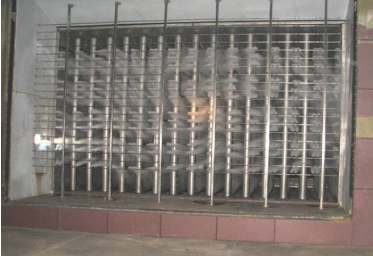
Figure 1: FOG NOZZLE MANIFOLD OPERATING IN THE INLET OF A GE-7EA GAS TURBINE [1]
Simulation Process
The 3-D domain of this simulation is based on the Marine Gas Turbine LM2500 Fogging Duct and has been designed using the ANSYS Design Modeler. It has an inlet and outlet. The meshing of this present model has been generated by ANSYS Meshing software. The mesh grid is unstructured, and the total cell number is 2492074 elements. The figure below shows an overview of the model. The Lagrangian-Eulerian framework is selected which means Discrete Phase Model (DPM) module is employed to track and solve DPM Droplets. Needless to say, the fogging system counts on water droplets evaporation after the injection. Thus, Species transport model is activated along the DPM.
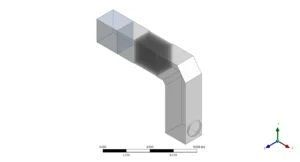
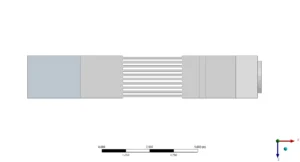
Figure 2: Geometric configuration of air intake turbine cooling system
Post-Process
The temperature contour analysis shows that there is a lot of thermal stratification in the intake duct. There are hot spots (320–323K) near the intake that gradually change to cooler spots (289–295K) near the compressor opening. The amazing efficiency of the evaporative cooling process is shown by this temperature drop of about 30K. The complicated geometrical bend in the duct creates flow recirculation zones that help water droplets stay in place longer. This is shown by the higher evaporation rates seen in these areas of the second DPM contour picture. It’s interesting to see how much evaporation is happening along the outside wall of the bend, where centrifugal forces are pushing droplets around and creating cooling points where rates are highest in the red areas.
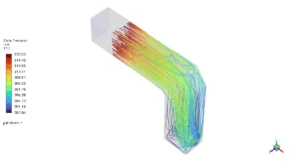
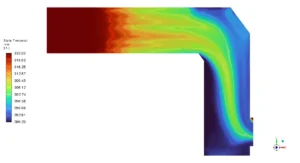
Figure 3: Temperature drop due to evaporative fogging system
The streamline image shows that the droplets and turbulent flow are interacting in the best way possible, with pathlines showing that the temperatures drop gradually as they get closer to the compressor inlet. The 323K inlet flow (red streamlines) changes through temperature ranges in the middle (green, 305–310K) before reaching 290–295K (blue) at the exit, which means that almost all of the water has evaporated and the thermal efficiency has been improved. Based on the known link between inlet temperature and power output, this temperature profile optimization will directly lead to a roughly 12.5% power boost for the LM2500 turbine. Also, the fact that the temperatures are all the same at the outlet says that the mixing is very good, which is important for keeping the compressor blades from warping due to heat. This is a key part of making sure that the system works as planned and adding power. The results clearly show that the chosen nozzle design and DPM boundary conditions work well to get the best cooling performance.
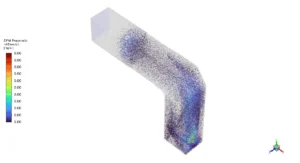
Figure 4: Droplets evaporation DPM CFD Simulation in turbine cooling system
We pride ourselves on presenting unique products at CFDLAND. We stand out for our scientific rigor and validity. Our products are not based on guesswork or theoretical assumptions like many others. Instead, most of our products are validated using experimental or numerical data from valued scientific journals. Even if direct validation isn’t possible, we build our models and assumptions on the latest research, typically using reference articles to approximate reality.
Yes, we’ll be here . If you have trouble loading files, having technical problems, or have any questions about how to use our products, our technical support team is here to help.
You can load geometry and mesh files, as well as case and data files, using any version of ANSYS Fluent.
€195 Original price was: €195.€135Current price is: €135.

€105 Original price was: €105.€65Current price is: €65.

€330 Original price was: €330.€175Current price is: €175.

€110 Original price was: €110.€85Current price is: €85.

€280 Original price was: €280.€145Current price is: €145.

€240 Original price was: €240.€115Current price is: €115.


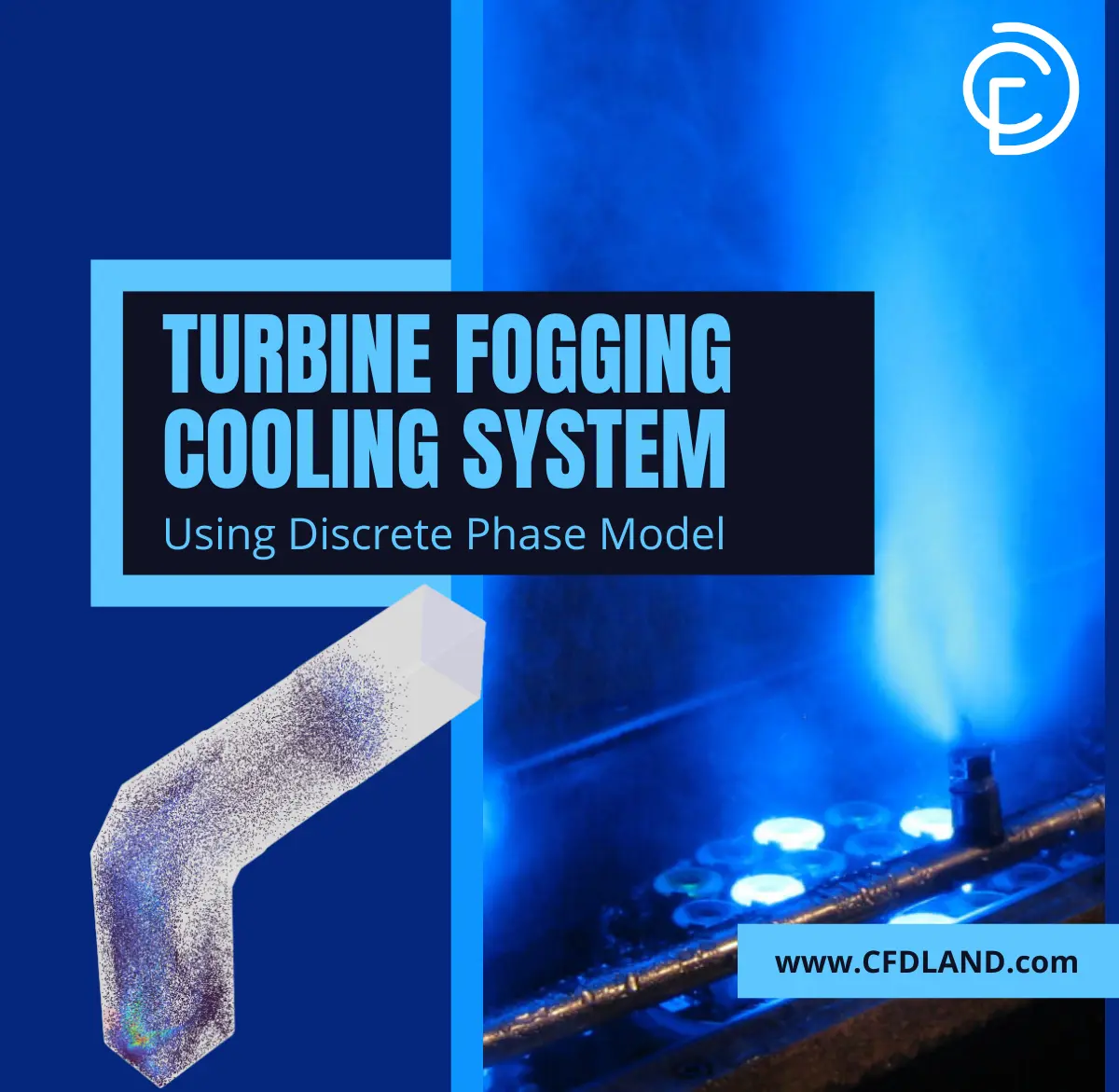
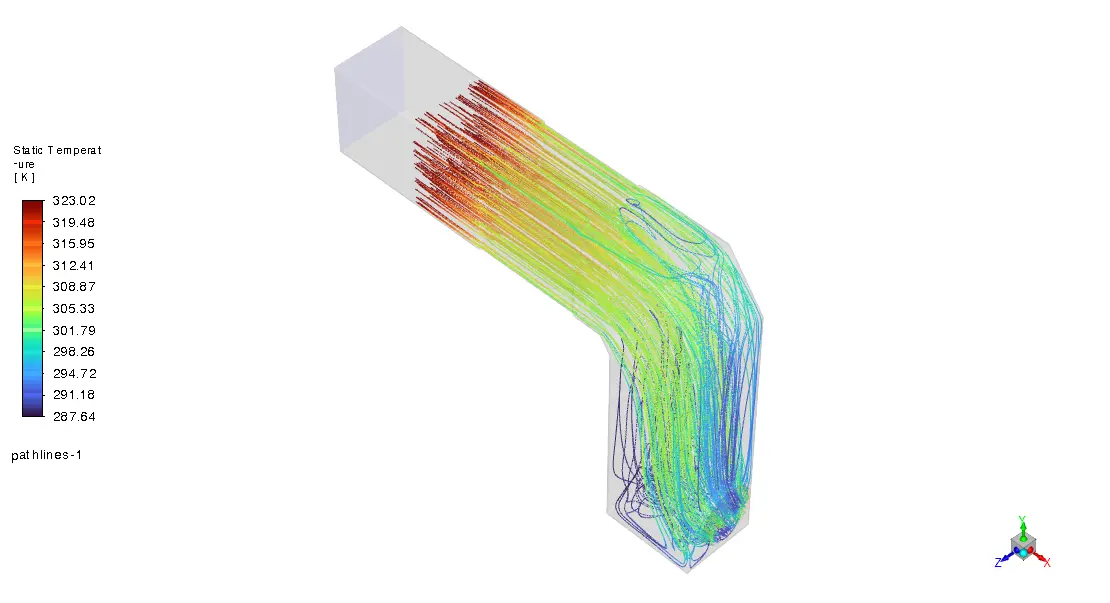
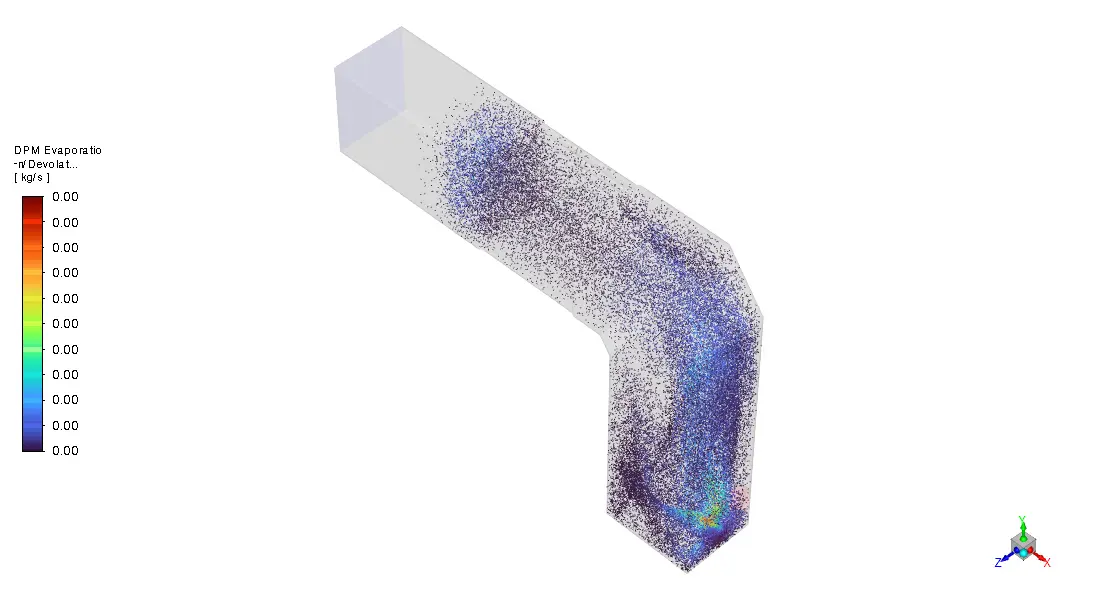
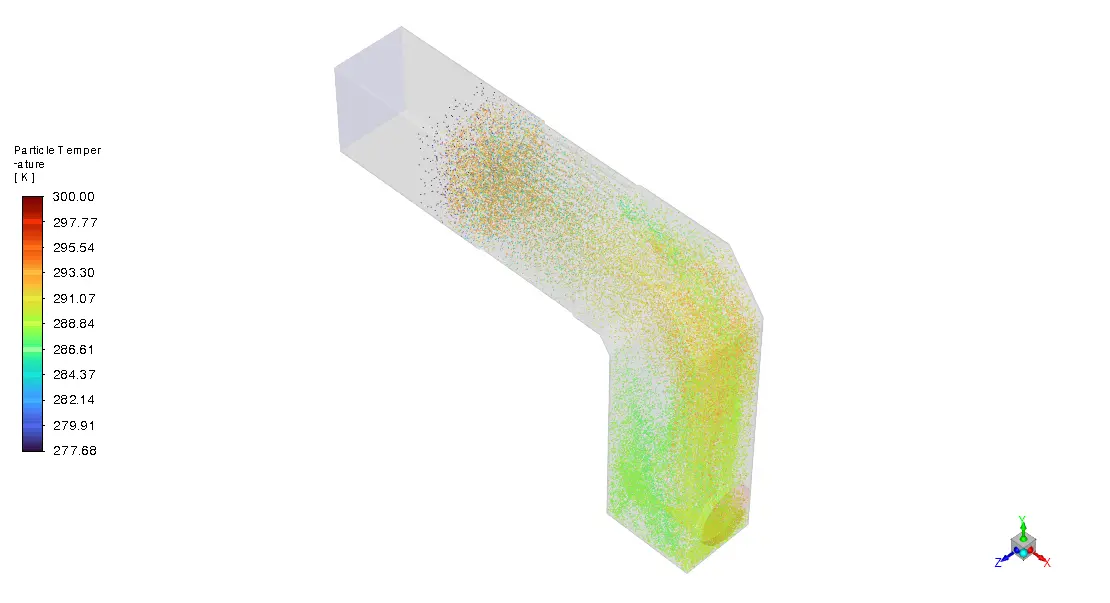
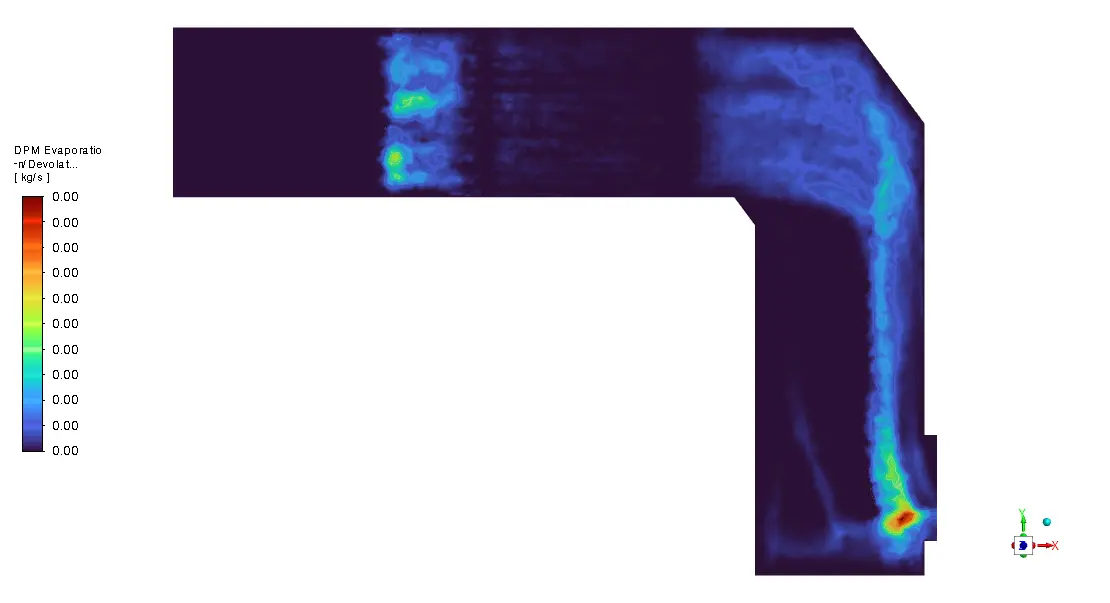
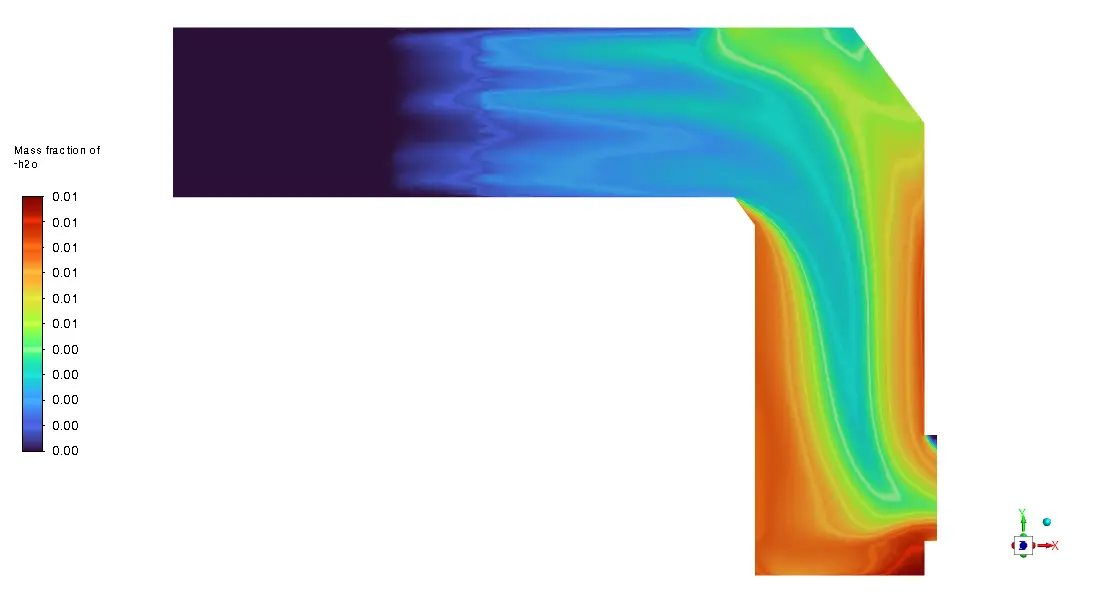
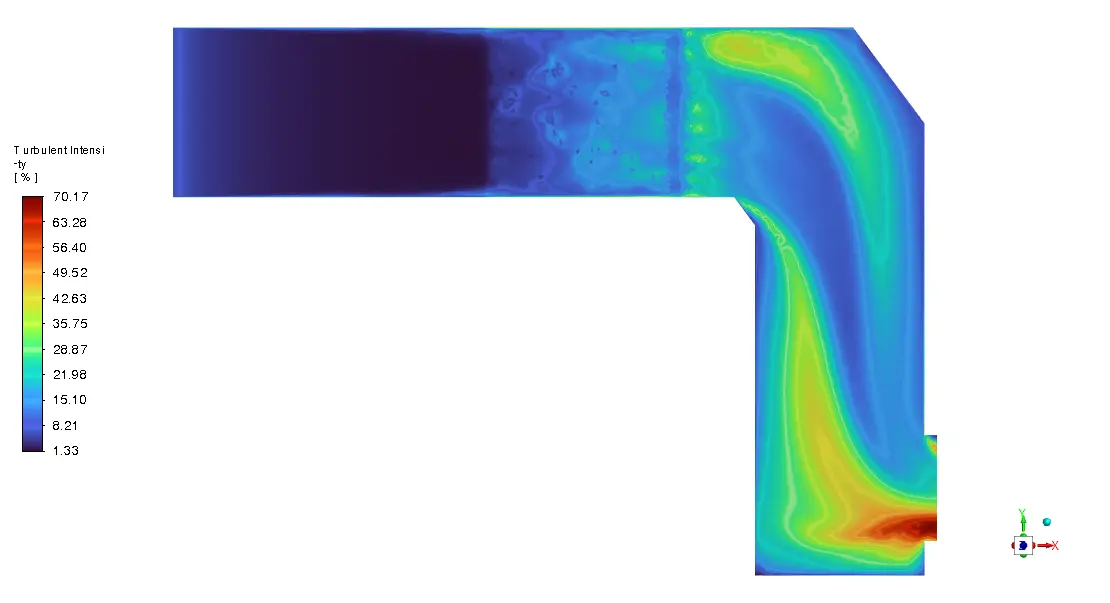
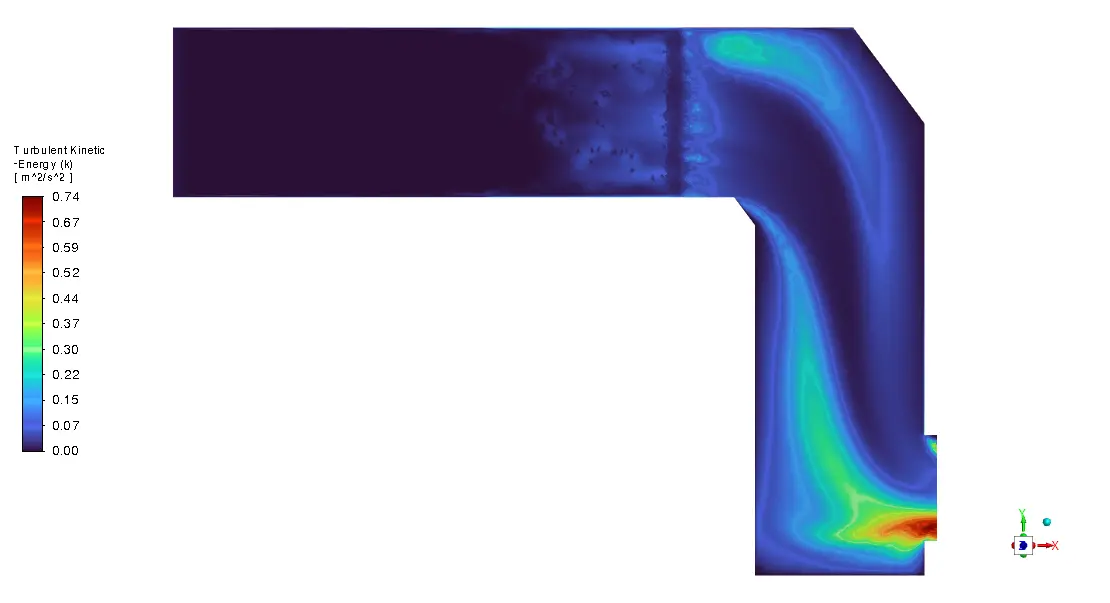
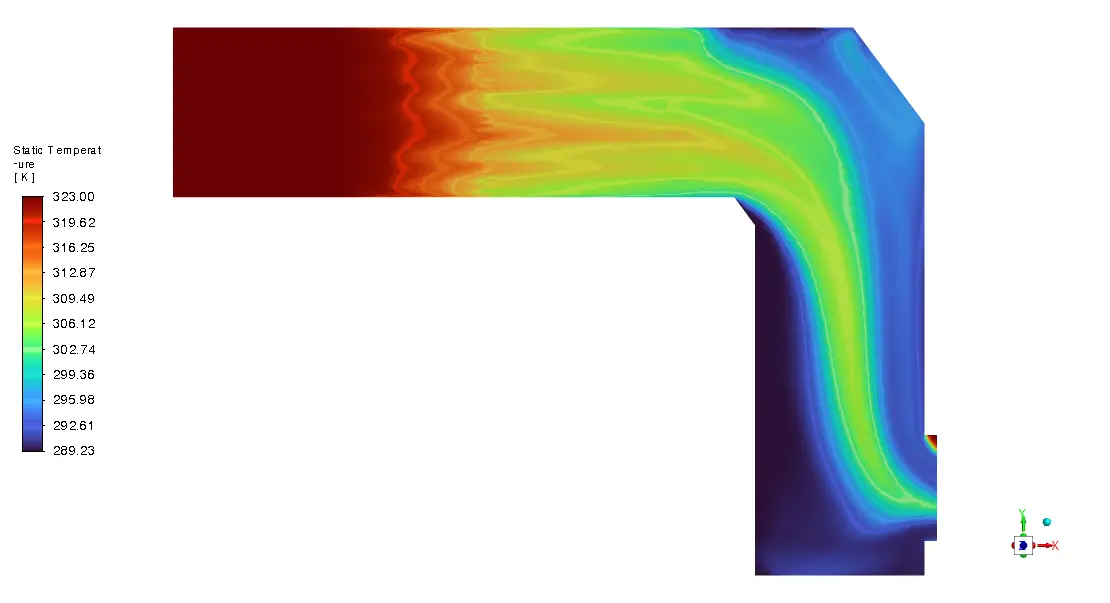
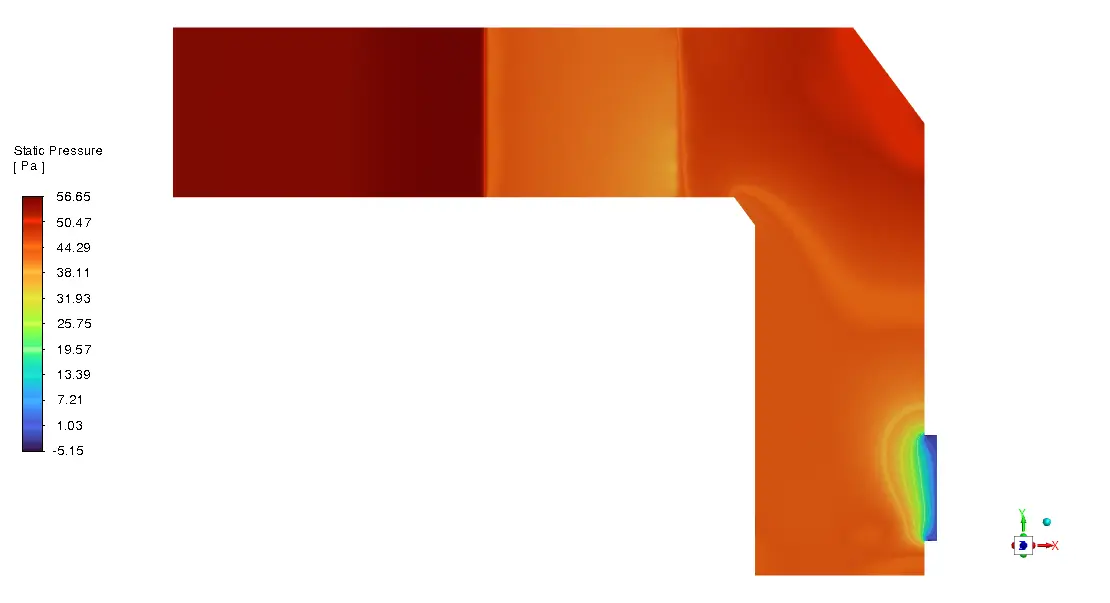
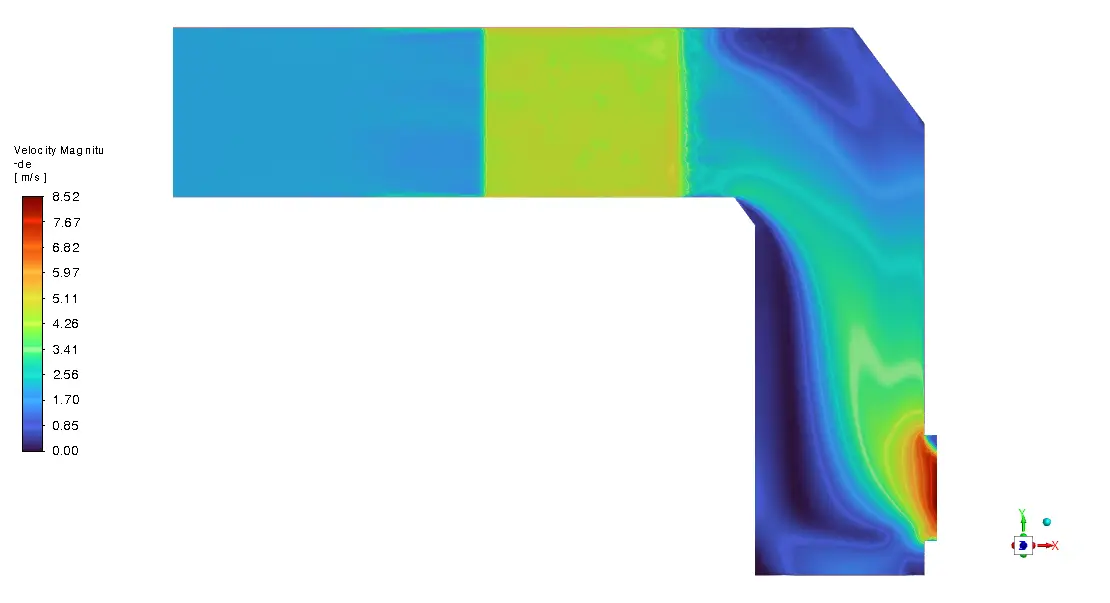





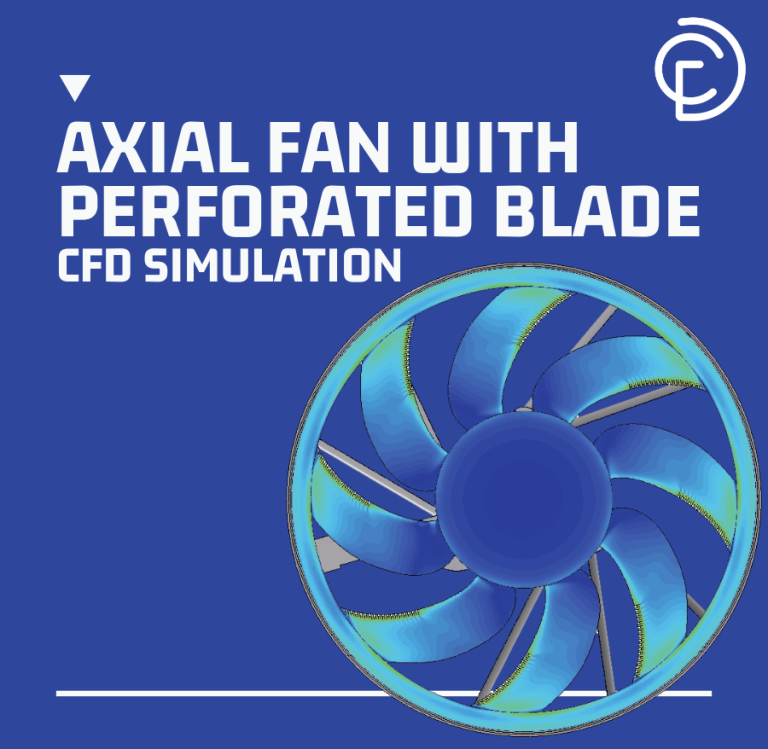




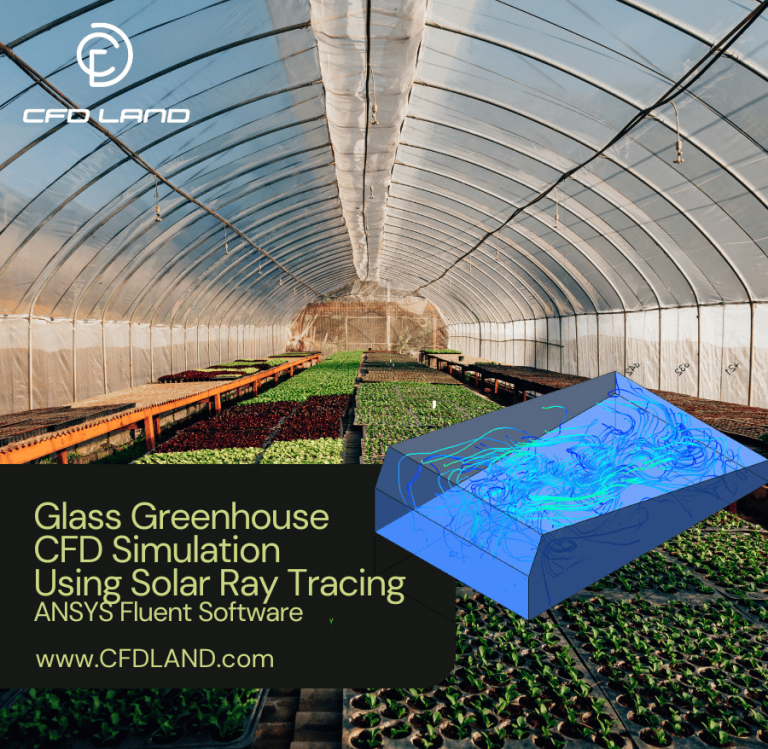
Reviews
There are no reviews yet.